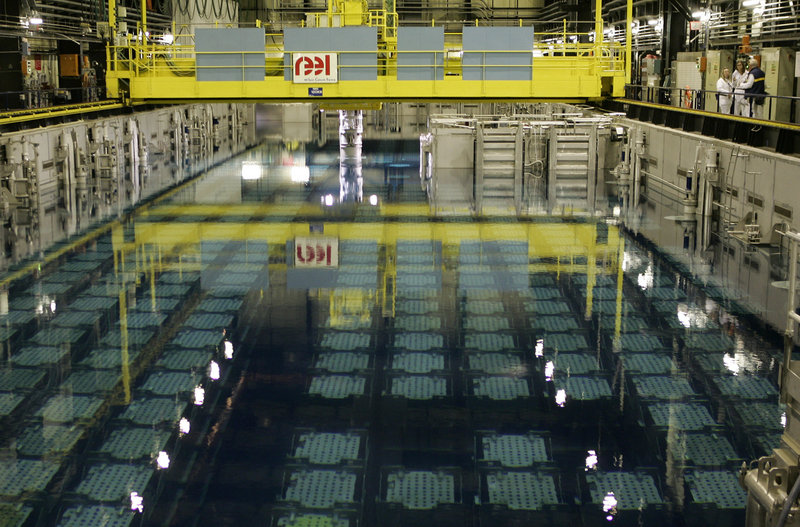WASHINGTON – U.S. nuclear plants use the same sort of pools to cool spent nuclear-fuel rods as the ones now in danger of spewing radiation at Japan’s Fukushima Dai-ichi plant, only the U.S. pools hold much more nuclear material. That’s raising the question of whether more spent fuel should be taken out of the pools at U.S. power plants to reduce risks.
Workers in Japan have been struggling for days to get water into the spent-fuel pools at the plant, so that the fuel rods won’t be exposed to the air, burst into flames and set off a large radiological release.
Experts are debating whether America’s spent fuel pools would fare as badly or worse in an accident, and whether they could be made safer.
Edwin Lyman, a physicist and nuclear expert at the Union of Concerned Scientists, said he has long been concerned that U.S. spent-fuel pools are too full. Lyman said that his group, which doesn’t take a position for or against nuclear power, recommends reducing risk at the spent-fuel pools by transferring some of the fuel rods to dry casks. “I think that’s being borne out by what we’re seeing in Japan,” he said Thursday.
The Japanese plant’s pools are far from capacity, but still contain an enormous amount of radioactivity, Lyman said. A typical U.S. nuclear plant would have about 10 times as much fuel in its pools, he said.
The Nuclear Regulatory Commission reaffirmed its position that the U.S. pools are operated safely. Pools are necessary to cool spent fuel for five years after it’s removed from a reactor. After that, either keeping it in the pool or moving it into dry casks, steel and concrete containers filled with an inert gas, is a safe method for temporary storage, said Scott Burnell, an NRC spokesman.
Fission produces the heat energy that boils water into steam to drive turbine generators to produce electricity. Every 18 months to 24 years, the plant is shut down and the oldest bundles of fuel rods are removed and replaced.
The spent fuel no longer produces enough energy to sustain a nuclear reaction. However, it still generates large amounts of radiation and heat. The pools contain the radioactivity and dissipate the heat.
Dangerous heating begins when the water drops below the top of the rods because it has boiled away or evaporated. As the rods balloon and rupture and the fuel pellets inside melt, radioactive material gets released.
Once a pool reaches capacity, some fuel rods must be transferred to dry casks, Burnell said. Until then, the plant operator can decide whether to keep the material in the water or move it. “Under our regulations, there’s no safety reason to move the fuel more rapidly,” he said.
The NRC closely regulates the use of spent fuel pools, Burnell said. “We allow spent fuel to be stored in ways that analysis has shown are acceptable and safe.”
Burnell said that research after the Sept. 11, 2001, attacks and extensive reviews of plant operations show “that it is possible even under emergency conditions to maintain an appropriate level of water in a spent fuel pool using very simple techniques” even under conditions where radiation levels would be high.
Send questions/comments to the editors.



Success. Please wait for the page to reload. If the page does not reload within 5 seconds, please refresh the page.
Enter your email and password to access comments.
Hi, to comment on stories you must . This profile is in addition to your subscription and website login.
Already have a commenting profile? .
Invalid username/password.
Please check your email to confirm and complete your registration.
Only subscribers are eligible to post comments. Please subscribe or login first for digital access. Here’s why.
Use the form below to reset your password. When you've submitted your account email, we will send an email with a reset code.